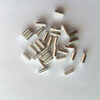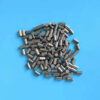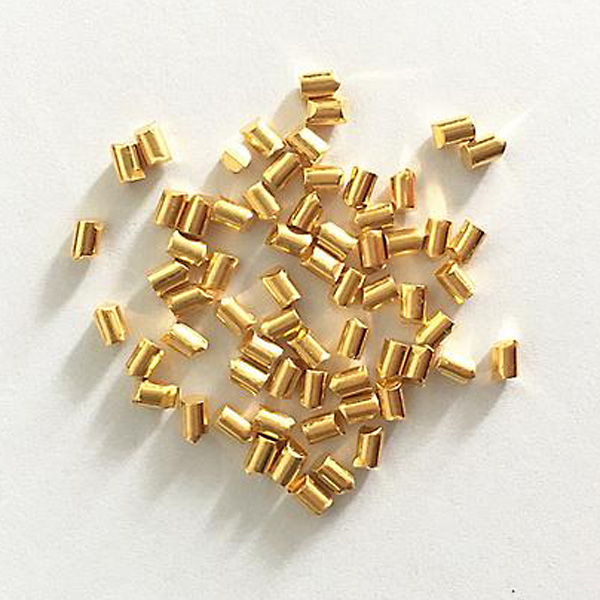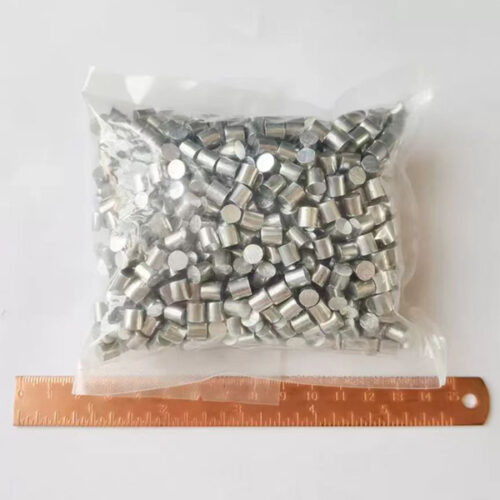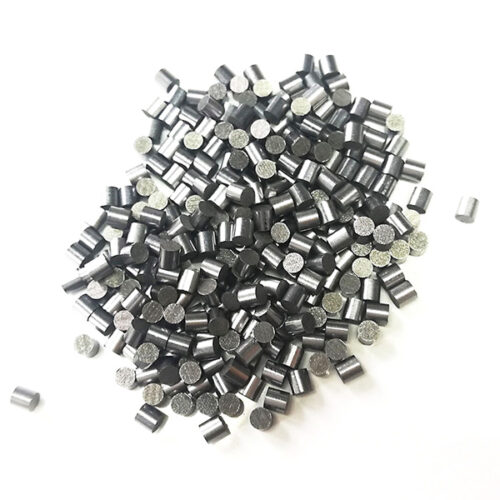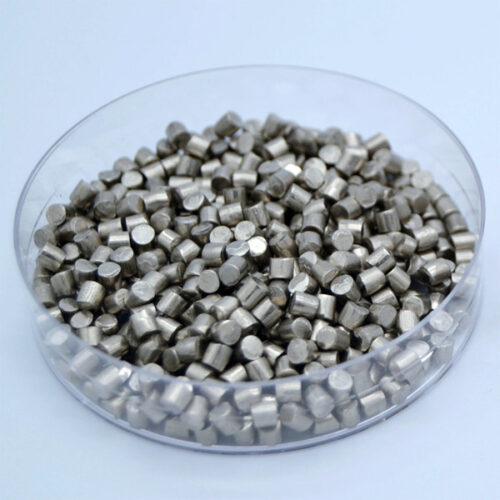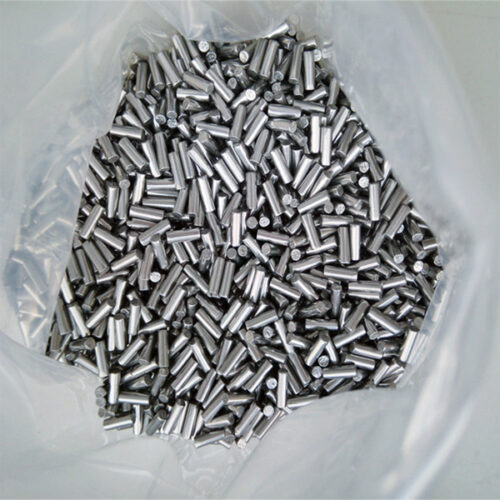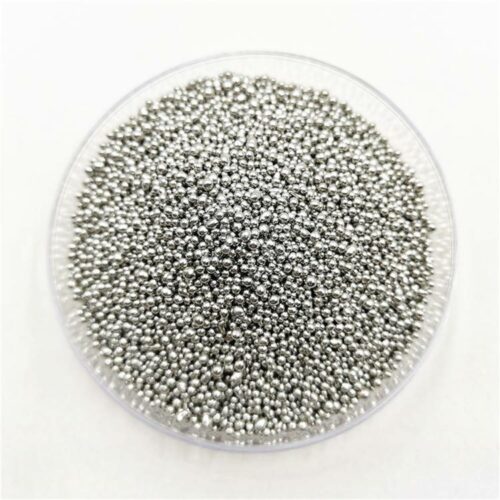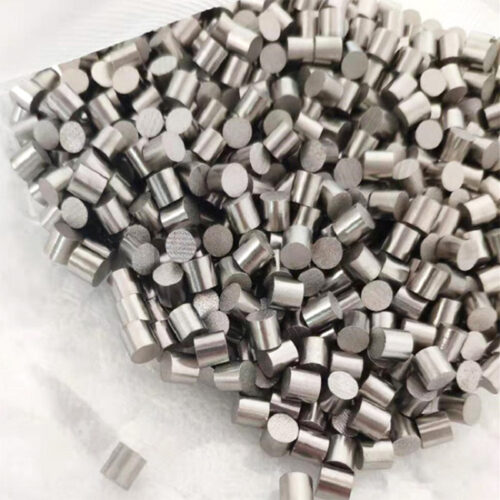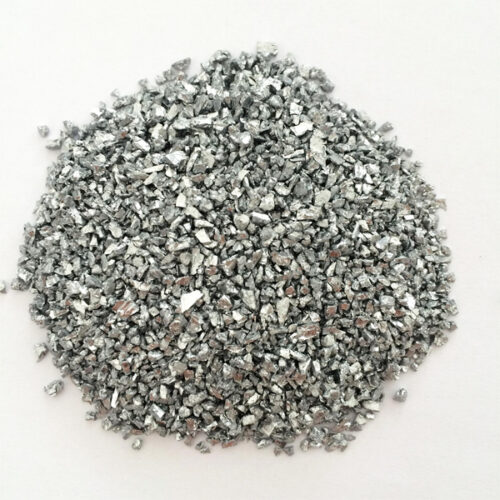4N (99.99%) Gold (Au) Pellets Evaporation Materials
Introduction:
Gold evaporation materials are solid gold-based substances specifically engineered for use in thermal evaporation processes. These materials typically exist in the form of pellets, rods, wires, or other shapes, which are suitable for vaporization in a vacuum environment.
During the thermal evaporation process, gold evaporation materials undergo heating to their vaporization temperature, causing them to transition directly from a solid to a vapor state. Subsequently, the vaporized gold condenses onto a substrate surface, forming thin films or coatings with desired properties.
Gold evaporation materials find applications across various industries owing to gold’s unique properties, such as excellent electrical and thermal conductivity, chemical inertness, and oxidation resistance. They serve common roles in electronics, including electrical contacts, bonding wires, and thin film transistors (TFTs). Additionally, they contribute to optoelectronic and optical devices, facilitating plasmonic applications and surface plasmon resonance (SPR) sensors.
Properties of Gold Evaporation Materials:
1. Precious Metal Excellence
Purity: Gold evaporation materials boast high purity, ensuring superior performance in diverse applications.
Color and Luster: Gold exhibits a distinct yellow hue and lustrous appearance, contributing to its aesthetic appeal in decorative and functional coatings.
Malleability: Gold is highly malleable, allowing for easy shaping and forming into thin films or intricate designs.
2. Electrical and Thermal Conductivity
Conductivity: Gold possesses excellent electrical and thermal conductivity, making it ideal for use in electronic and thermal management applications.
Reliability: Gold’s low electrical resistance and high thermal conductivity ensure efficient energy transfer and minimal signal loss in electronic devices.
3. Chemical Inertness and Oxidation Resistance
Chemical Stability: Gold exhibits remarkable chemical inertness, resisting corrosion and tarnishing even in harsh environments.
Oxidation Resistance: Gold’s resistance to oxidation ensures long-term stability and reliability in various applications, particularly in electronics and optics.
Applications:
1. Electronics and Semiconductor Devices
Electrical Contacts: Gold is widely used as a contact material in electronic components and semiconductor devices due to its low contact resistance and durability.
Bonding Wires: Gold wires serve as interconnects in semiconductor packaging, ensuring reliable electrical connections in integrated circuits.
Thin Film Transistors (TFTs): Gold thin films are utilized in TFTs for displays and sensors, facilitating high-performance electronic devices.
2. Optoelectronic and Optical Devices
Plasmonic Devices: Gold nanoparticles and thin films exhibit unique plasmonic properties, enabling the development of advanced photonic and optoelectronic devices.
Surface Plasmon Resonance (SPR) Sensors: Gold-coated surfaces are utilized in SPR sensors for label-free detection of biomolecular interactions in medical diagnostics and biosensing.
3. Decorative and Functional Coatings
Jewelry and Art: Gold evaporation materials find extensive use in jewelry making and artistic applications, adding luxurious finishes and embellishments to ornaments and artworks.
Mirrors and Reflective Coatings: Gold coatings are employed in mirrors and reflective surfaces for their high reflectivity across the visible and infrared spectrum, crucial for optical systems and astronomical instruments.
Manufacturing Processes:
1. Gold Alloy Preparation
Gold feedstock may undergo alloying processes to tailor its properties for specific applications, such as enhanced hardness or conductivity.
2. Evaporation Source Fabrication
Molten gold is solidified into various forms, such as pellets, rods, or wires, suitable for use as evaporation sources in vacuum deposition systems.
Customized evaporation sources can be fabricated to accommodate specific deposition requirements, ensuring precise control over film thickness and composition.
3. Vacuum Deposition
In a vacuum chamber, gold evaporation materials are heated to their vaporization temperature under controlled conditions.
The vaporized gold condenses onto substrate surfaces, forming thin films with tailored properties, such as conductivity, reflectivity, or plasmonic characteristics, depending on the application.
Specification:
Our standard size are 3mm Diameter x 3mm Length and 3mm Diameter x 5mm Length, and other specifications are also available.Please consult our professional customer service personnel for detailed information.
Our standard packaging sizes include 1 grams, 5 grams, 10 grams, 20 grams, 50 grams, and 100 grams.
ZYLAB offers a variety of crucibles for evaporation materials.

